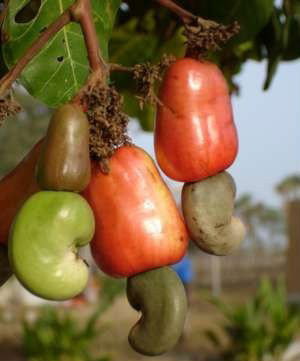


However, more cashew-specific research is needed. SummaryĬashews are rich in carotenoids and polyphenols, two categories of antioxidants that may help reduce inflammation and offer protection from disease. That said, the number of cashew-specific studies are limited and more research is needed before strong conclusions can be made ( 17). This may be particularly true of roasted cashews, which appear to have an increased antioxidant activity compared with their “raw” counterparts ( 17).

Studies link antioxidants in nuts like walnuts, pecans, and almonds to lower levels of oxidative cell damage ( 14, 15, 16).ĭue to their similar antioxidant profile, cashews may be expected to offer similar oxidation-fighting benefits.
#CASHEW SHELL FREE#
In turn, this helps reduce inflammation and increases your body’s ability to stay healthy and free from disease ( 12).Ĭashews are a rich source of polyphenols and carotenoids - two classes of antioxidants also found in other tree nuts ( 13). Nuts and seeds are considered antioxidant powerhouses, and cashews are no exception ( 11).Īntioxidants are beneficial plant compounds that keep your body healthy by neutralizing damage-causing molecules known as free radicals.

They’re also a good source of copper, magnesium, and manganese - nutrients important for energy production, brain health, immunity, and bone health. SummaryĬashews are low in sugar and rich in fiber, heart-healthy fats, and plant protein. They’re also a great source of magnesium and manganese, nutrients important for bone health ( 8, 9, 10). In addition, cashews contain a significant amount of copper, a mineral essential for energy production, healthy brain development, and a strong immune system. They’re also low in sugar, a source of fiber, and contain almost the same amount of protein as an equivalent quantity of cooked meat ( 5, 6, 7). One ounce (28 grams) of unroasted, unsalted cashews provides you with around ( 1):Ĭashews are especially rich in unsaturated fats - a category of fats linked to a lower risk of premature death and heart disease ( 2, 3, 4). The present chapter deals with the source of production, processes, and geographical information, export/import, and chemical composition, industrial utility, and environmental effects of CNSL in modern perspectives.Cashews are rich in a range of nutrients. Other components include 1241-hydroxy-2-carboxy-3-pentadecyl benzene, 1-hydroxy-2-carboxy-3-(8’-pentadecenyl) benzene, 1-hydroxy-2-carboxy-3-(8,’11’-pentadecadienyl) benzene, 1-hydroxy-2-carboxy-3-(8,’11,’14’-pentadecatrienyl)benzene, 2-methyl-5-pentadecyl resorcinol, 2-methyl-5-(8’-pentadecenyl)resorcinol, 2-methyl-5-(8,’11’-pentadecadienyl) resorcinol, 2-methyl-5-(8,’11,’14’-pentadecatrienyl)resorcinol, 3-pentadeca-anisole, 3-(8’-pentadecenyl) anisole, 1-methoxy-3-(8,’11’-pentadecadienyl)benzene, 1-methoxy-3-(8,’ 11,’14’-pentadecatrienyl)benzene, 5-pentadecyl resorcinol, 5-(8’-pentadecyl) resorcinol, 5-(8,’11’-pentadecadienyl)resorcinol, and 5-(8,’ 11,’14’-pentadecatrienyl)resorcinol. This oil is composed of anacardic acid (3-n-pentadecylsalicylic acid), and lesser amounts of cardanol (3-n-pentadecylphenol), cardol (5-n-pentadecylresorcinol), methylcardol (2-methyl-5-n-pentadecylresorcinol) and a small amount of polymeric material. The shell of the cashew nut (Anacardium occidentale L.) contains an alkylphenolic oil named cashew nut shell liquid (CNSL) amounting to nearly 25% of the total weight of the nut. By weight, cashew nuts comprise 50% shell, 25% kernel (including testa), and 25% shell liquid. The fruit consists of an outer shell, inner shell, and the kernel. The cashew tree consists of the cashew nut fruit (which is a curved edible seed, housed in a honeycomb-like shell), the apple, leaf, and bark.


 0 kommentar(er)
0 kommentar(er)
